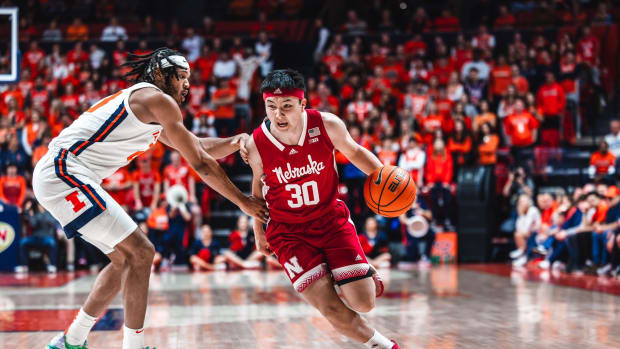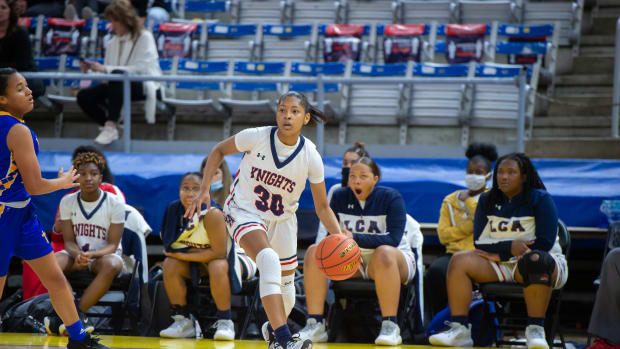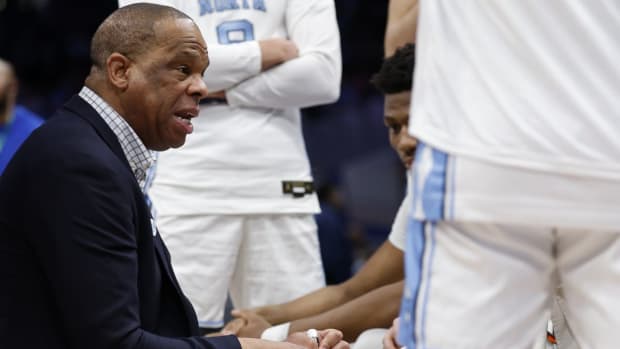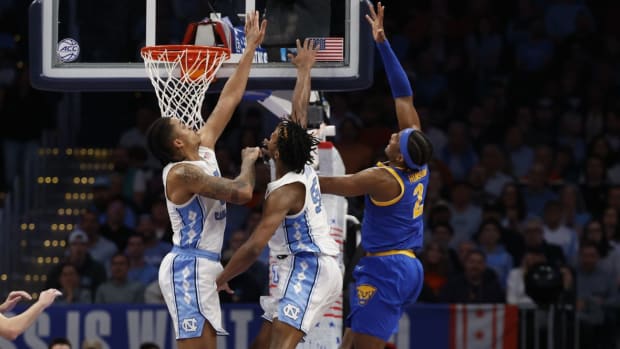NCAA Tournament: Snubs, Seeds and Other Takeaways From the 2019 Bracket
The 2019 NCAA tournament bracket has been revealed, and the greatest sporting event on the planet begins in four days. Here are just a few of the things we’ll be talking about between now and then.
The ACC gets three No. 1 seeds
The field includes three No. 1 seeds from the same conference for the first time since 2009, when the previous version of the Big East pulled it off with Pittsburgh, Connecticut and Louisville earning spots on the top line. This became a consensus opinion once Tennessee lost to Auburn in the SEC championship game and was fully expected by the time the bracket was unveiled. It also feels like the right choice, as unintuitive as that might seem. With all due respect to Gonzaga, the fourth No. 1 seed, as well as Michigan State, Tennessee and Kentucky, the three ACC powerhouses had the strongest résumés in the country.
As expected as the ACC’s dominance of the top line was, we did learn something about how the committee valued Duke and North Carolina. The Blue Devils lost twice to North Carolina in the regular season, but both of those games were without Zion Williamson. With the Blue Devils back at full strength and the champions of the ACC tournament, the committee didn’t feel it necessary—justifiably so—to hold against them what they did without Williamson. At the same time, North Carolina got full credit for its wins against a Zion-less Duke squad. There’s some cognitive dissonance in that decision-making—if Duke wasn’t penalized for the games it lost without Williamson, should the teams that beat them when they were missing their best player get full credit?—but North Carolina also beat Gonzaga and won a share of the ACC regular season championship. That certainly was good enough for a top seed.
Mid-majors didn’t get much love
Yeah, Belmont got an at-large bid, but it was one of the last four teams in the field. UNC-Greensboro was close to the field but got shut out. Furman and Lipscomb didn’t appear to be in consideration over the weekend. Meanwhile, Arizona State and Temple were rewarded with at-large bids. The Sun Devils had four losses outside the top-two quadrants, including two in Q4. They lost to Princeton, Utah and Washington State at home. They lost at Vanderbilt, which went 0–19 in SEC play, including the conference tournament. Those are four terrible losses for an at-large team. They also lost to Stanford, USC, Colorado and Oregon twice, four teams that were nowhere near the at-large radar.
Temple had two wins over teams that got at-large bids—Houston and UCF. The Owls lost to Penn at home and at Tulsa, then got knocked out of the AAC tournament by Wichita State in its first game. Yet, they were valued over teams that dominated their conferences in the regular season. Indiana, Texas and Alabama may have been left out, but it was still hard to be one of the little guys this year.
Duke and Michigan State are in the same region? Really?
On the whole, the Selection Committee did a strong job with the field of 68. They weren’t afraid of giving three teams from the same conference No. 1 seeds, they took Belmont as an at-large team, and the seeding decisions for teams in the field were generally reasonable. The one glaring mistake is in the East Region, where Duke and Michigan State are on a crash course in the Elite Eight.
This was an absolutely indefensible move by the committee. Duke is the No. 1 overall seed in the field. Michigan State was in the No. 1 seed discussion up until Sunday, but ultimately ended up as the No. 6 overall seed. The Spartans won 13 Q1 games, most in the country. They won 19 combined Q1 and Q2 games, also the most in the country. The Big Ten was the top-rated conference on kenpom.com, and Michigan State won both its regular season (shared with Purdue) and tournament championships. How is it possible that this team has to go through the No. 1 overall seed just to get to the Final Four?
But wait, it gets worse. Michigan is the No. 8 overall seed, two spots behind Michigan State. The Spartans beat the Wolverines, not once, not twice, but thrice. So, if you’re keeping score at home, Michigan State has a higher overall seed than Michigan, went 3–0 in its meetings with its in-state rival, yet got paired with Duke, while the Wolverines share a region with Gonzaga, the No. 4 overall seed. Again, this was a complete fumble by the committee and suggests that, yet again, the result of the Big Ten tournament championship game was meaningless.
If anyone can complain about a snub, it’s NC State
With a big hat tip to Jay Bilas, whom I first heard say something along these lines years ago, I’d like to go back to one of my favorite bracket truisms: Every single bubble team has proved one thing, and that’s that it can lose with regularity. On top of that, every team in the country plays 30-plus games and has a chance at an automatic bid in its conference tournament. With few exceptions, there are no true snubs in the NCAA tournament discussion.
However, NC State has some grounding to look askance at a field of 68 in which it isn’t included. Yes, the Wolfpack played the weakest non-conference schedule in the country. A lot of those games were scheduled years in advance, and many of their opponents experienced precipitous declines since then. UNC-Asheville won 21 games and was in the NIT last year, for example. Plus, that dead-last ranking came largely from the worst teams on their schedule. The Wolfpack played Wisconsin in Madison, Auburn at home, and Penn State on a neutral floor—and won the latter two games. They also played Vanderbilt, which was predicted to be in the middle of the SEC pack in the preseason, on a neutral court. Does that sound like the worst non-conference schedule in the country?
And then, of course, NC State played a full ACC slate. Including the conference tournament, the Wolfpack won 10 ACC games, with two against Clemson and one against Syracuse. Those wins don’t jump off the page, which is why they were on the bubble, but the talk of their terrible schedule was overstated. Additionally, they were ranked 33rd in NET, 32nd on kenpom.com, 24th in Sagarin, 37th in T-Rank, and 24th in BPI. The Wolfpack have no one to blame but themselves, but they easily could’ve been in the field over Arizona State, Temple or St. John’s.
Sunday’s conference championship games don’t matter
Michigan State, Auburn and Cincinnati won tournaments on Sunday in leagues that got multiple bids to the tournament. We already covered the absurdity of the Spartans’ seeding and draw. Auburn, which knocked off Tennessee in the SEC championship and finished with 17 combined Q1 and Q2 wins, ended up as a No. 5 seed. Cincinnati, which cruised past Houston—a No. 3 seed—in the AAC final, got a No. 7. It’s likely Michigan State, Auburn and Cincinnati all started the day on the seed line where they ended it. Sunday’s championship games continue to be college basketball’s version of a tree falling in the woods with no one around. If a game is played after the committee has kicked up its feet, does it make a sound?




